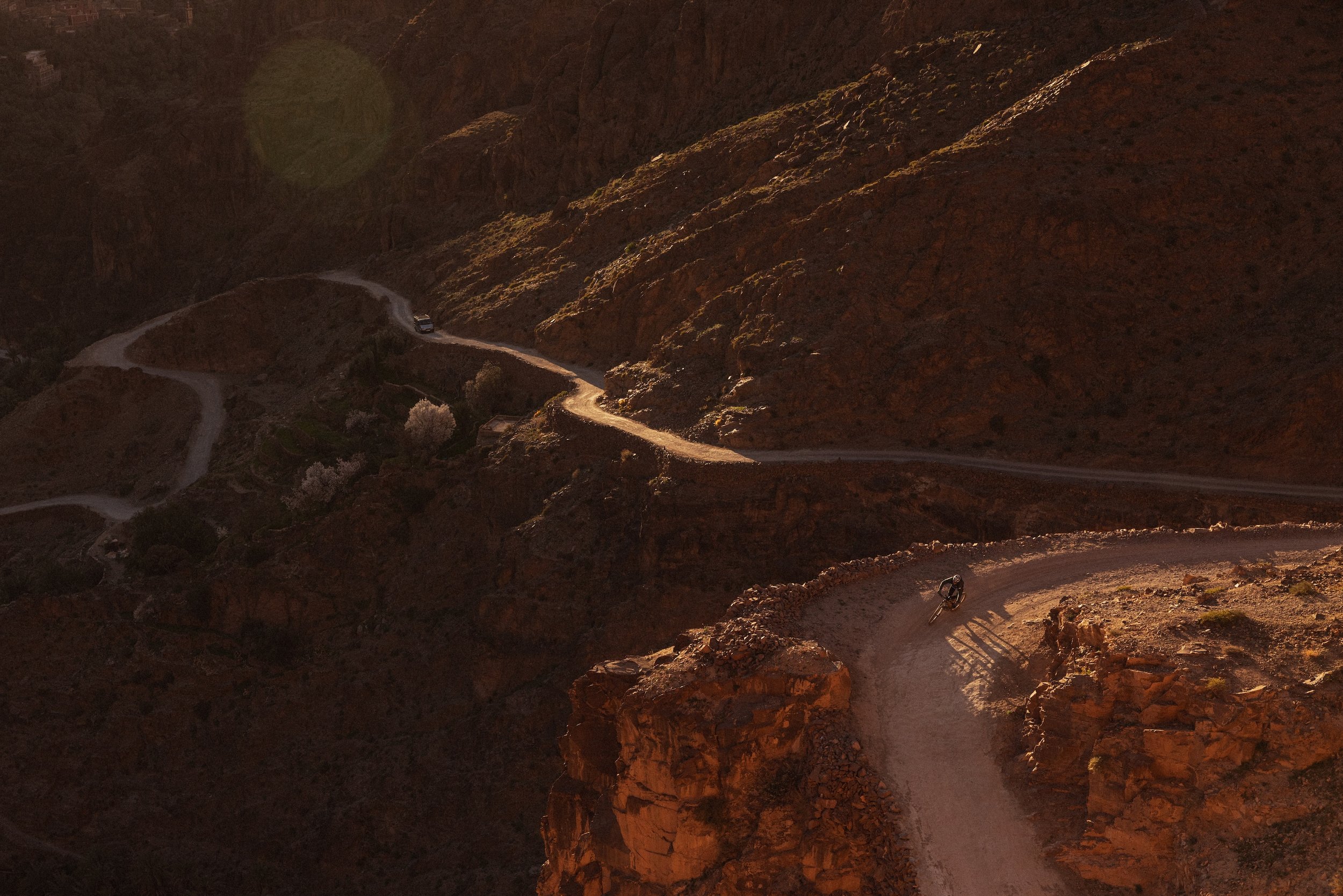
6-14 FEBRUARY 2026
Applications for AMR 2026 are now closed and all successful applicants have been notified. Thank you to everyone who applied.
See you in Beni-Mellal!
Snow capped peaks and lunar landscapes are criss-crossed by broken roads and remote colonial pistes, setting the stage for an epic adventure through the Atlas Mountains. The route is a 1,350km network of lines that weave their way over high passes, scorched plains, and remote oases, along some of the most gruelling terrain in Morocco. The Atlas Mountain Race is a fixed route, unsupported, single-stage cycling race that starts in Beni-Mellal, crosses the Moroccan Atlas before taking riders through the Anti-Atlas and on to Essaouira.
The clock does not stop and there are no prizes. The route follows gravel, single and double track and old colonial pistes that have long been forgotten and fallen into disrepair. There is very little tarmac. There is some walking, and at times there is great distances between resupply points. The exact distance and elevation vary from year to year, but riders can expect approximately 1350km in distance, 25,000m of climbing and 8 days to complete the route.
2026 will be a year of change for the AMR. For the first time since its inception we will start the race in Beni-Mellal, the capital of Beni-Mellal-Khénifra Region and a great jumping off point into the heart of the High Atlas. This allows us to explore a new crossing of the High Atlas and the incredible gorges of M’Goun. What this means is that the first 300km of the race route are completely new. It does also mean that we will no longer be heading over the iconic Telouet pass. The new route is a little longer and features more elevation gain, bringing the race route up to around 1350km and 25,000m of elevation.
From the start in Beni-Mellal, riders head straight into the mountains. The first major resupply comes in Tabant at 180 km, after which the route climbs Tizi N’Aït Imi—the highest pass we’ve ever included in AMR at 2,910m—before dropping into the narrow, winding gorge of M’Goun. Conditions depending, riders will follow a mule trail through the river itself, with a diversion in place if needed due to weather conditions.
After the gorge, the route reconnects with more familiar ground: the colonial piste to Afra, the climb to Aguinane and CP2, the old colonial road, and the long final stretch to Essaouira.
Visit the collection on RideWithGPS for the full course breakdown.


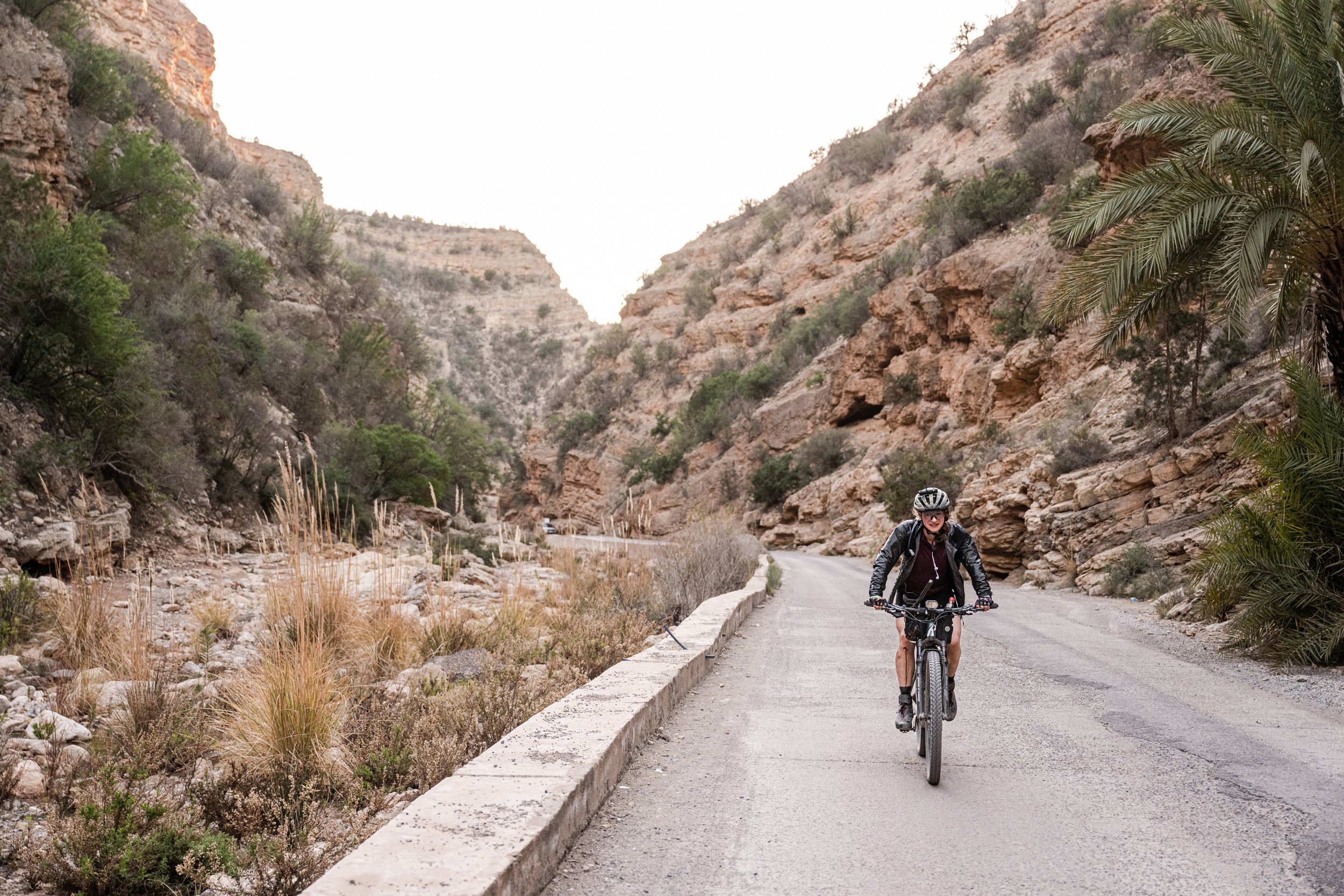
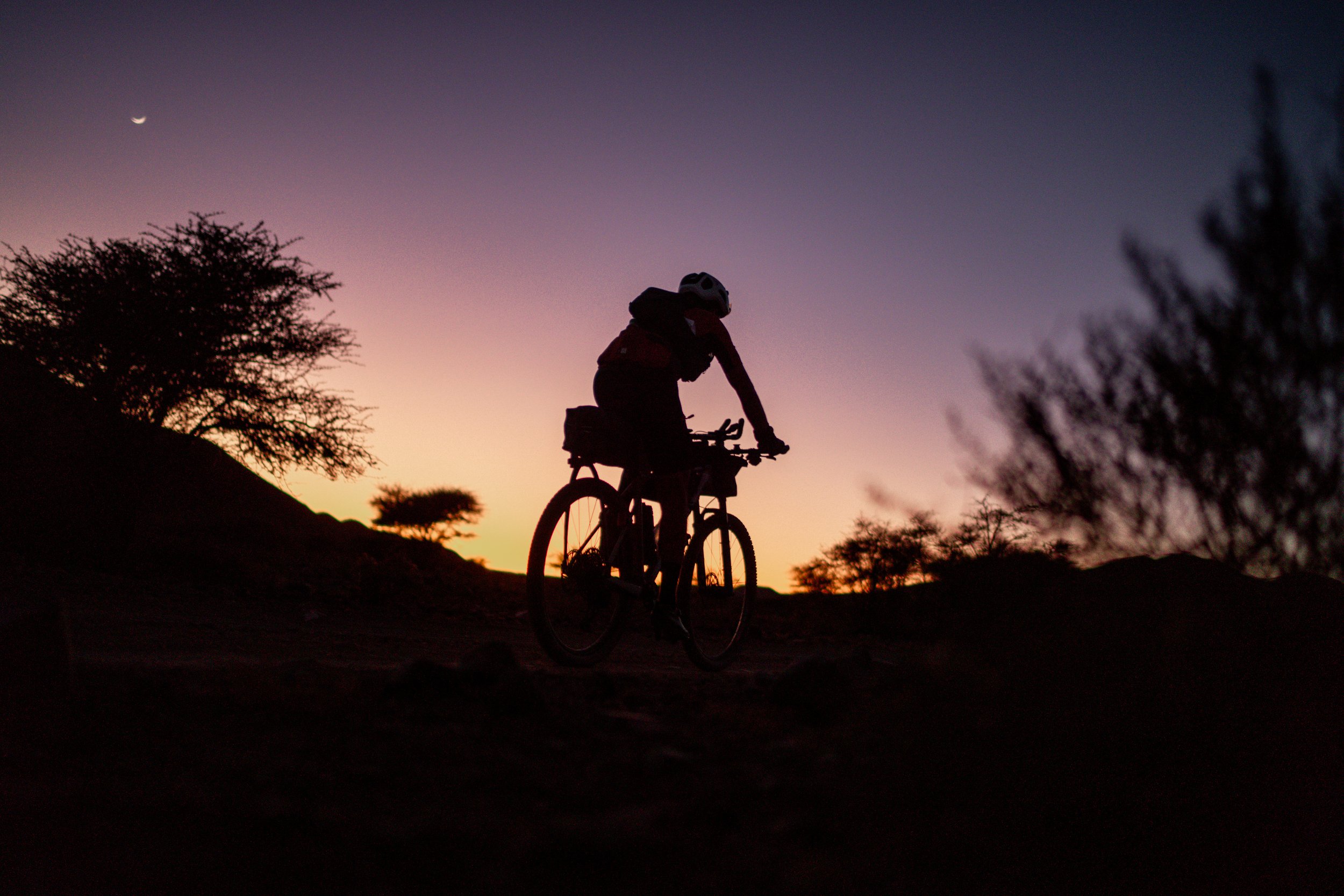

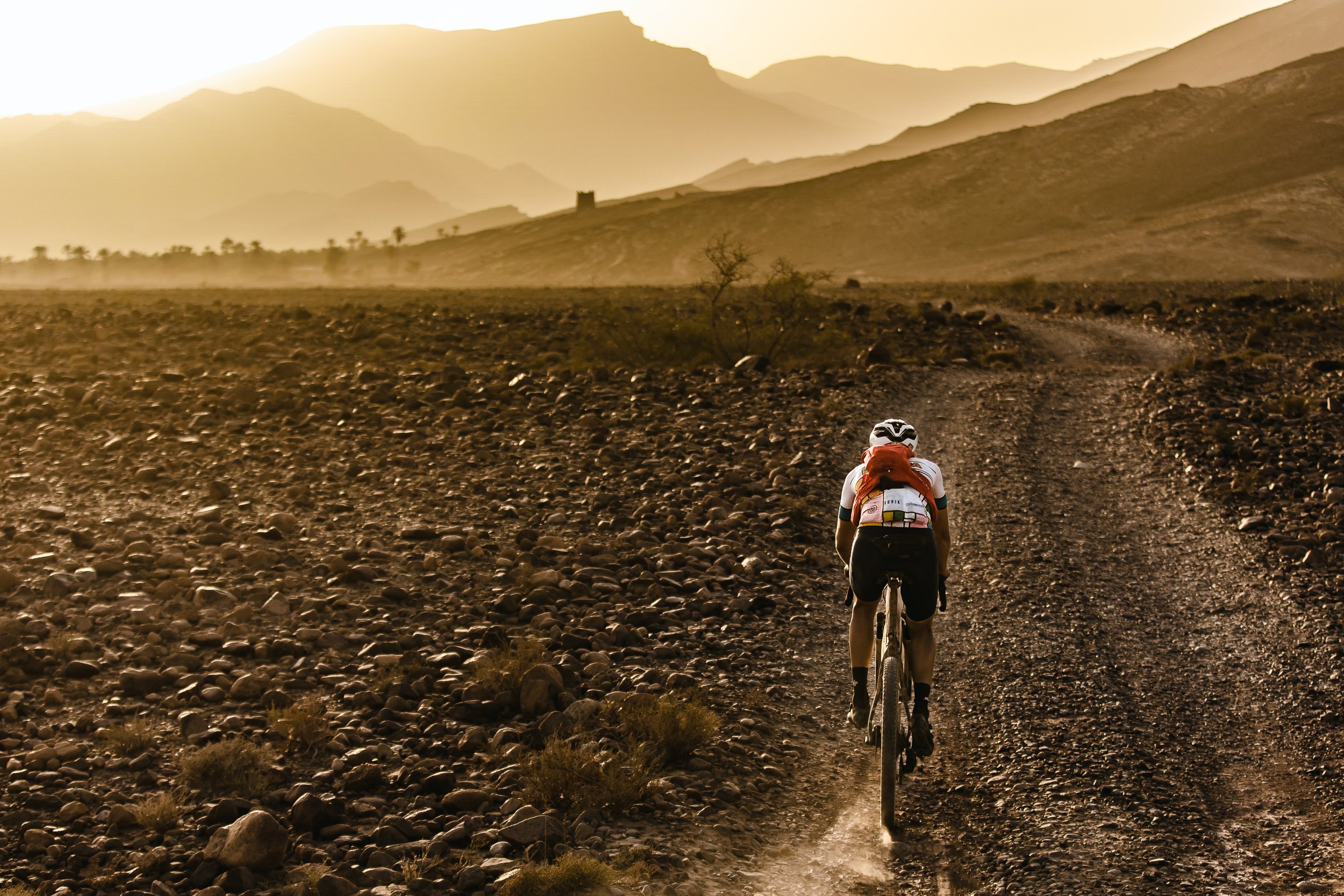
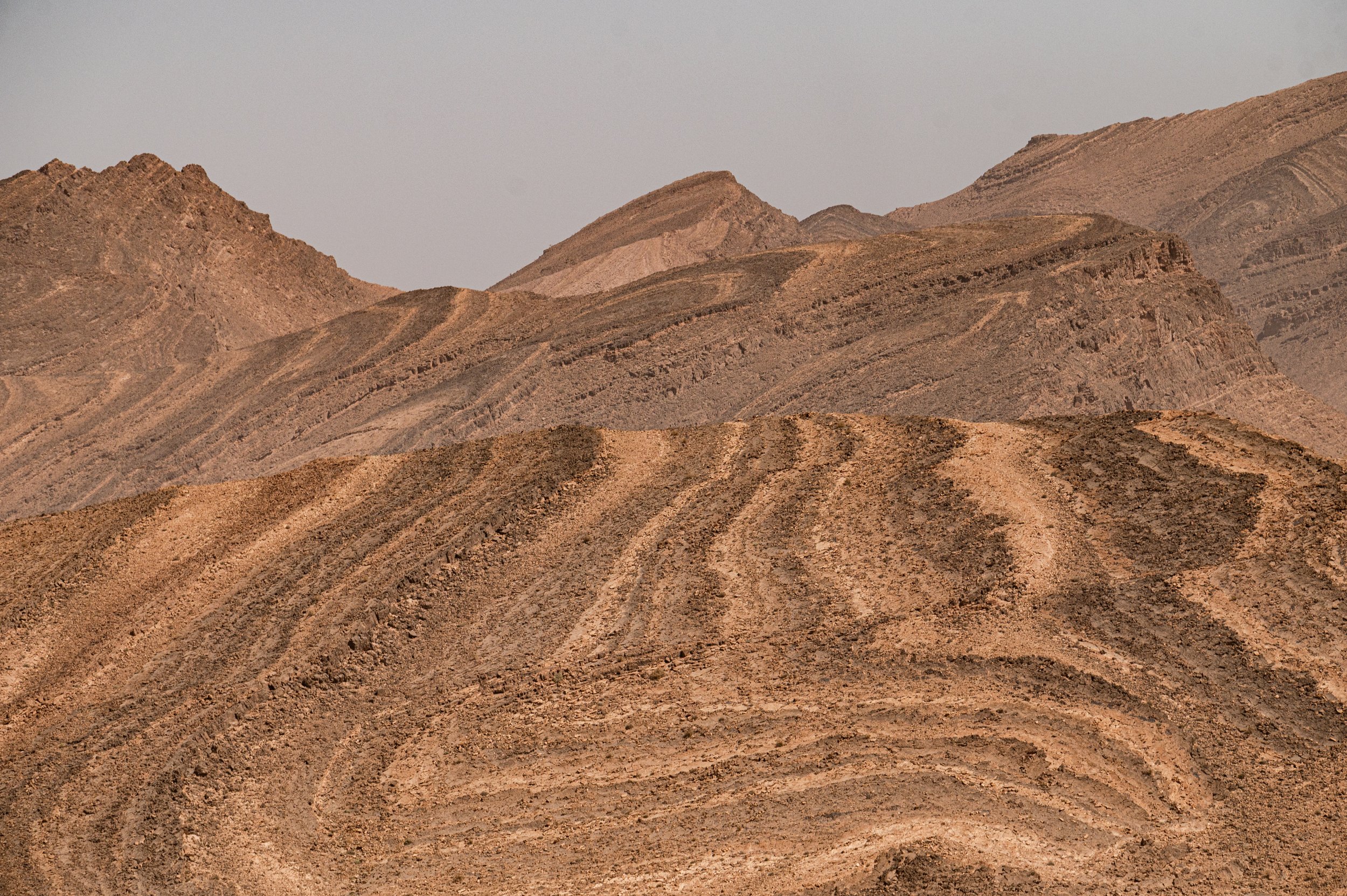






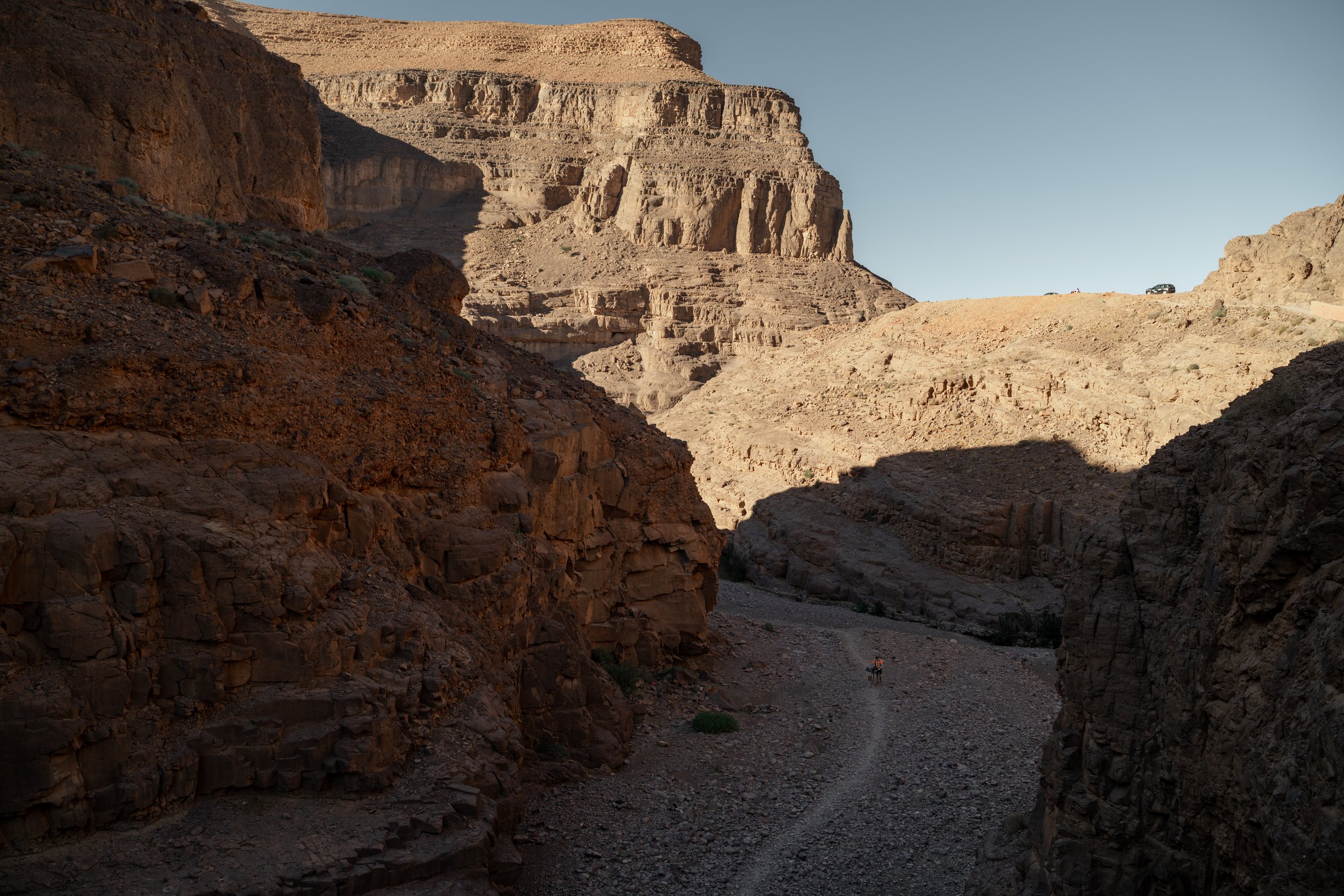
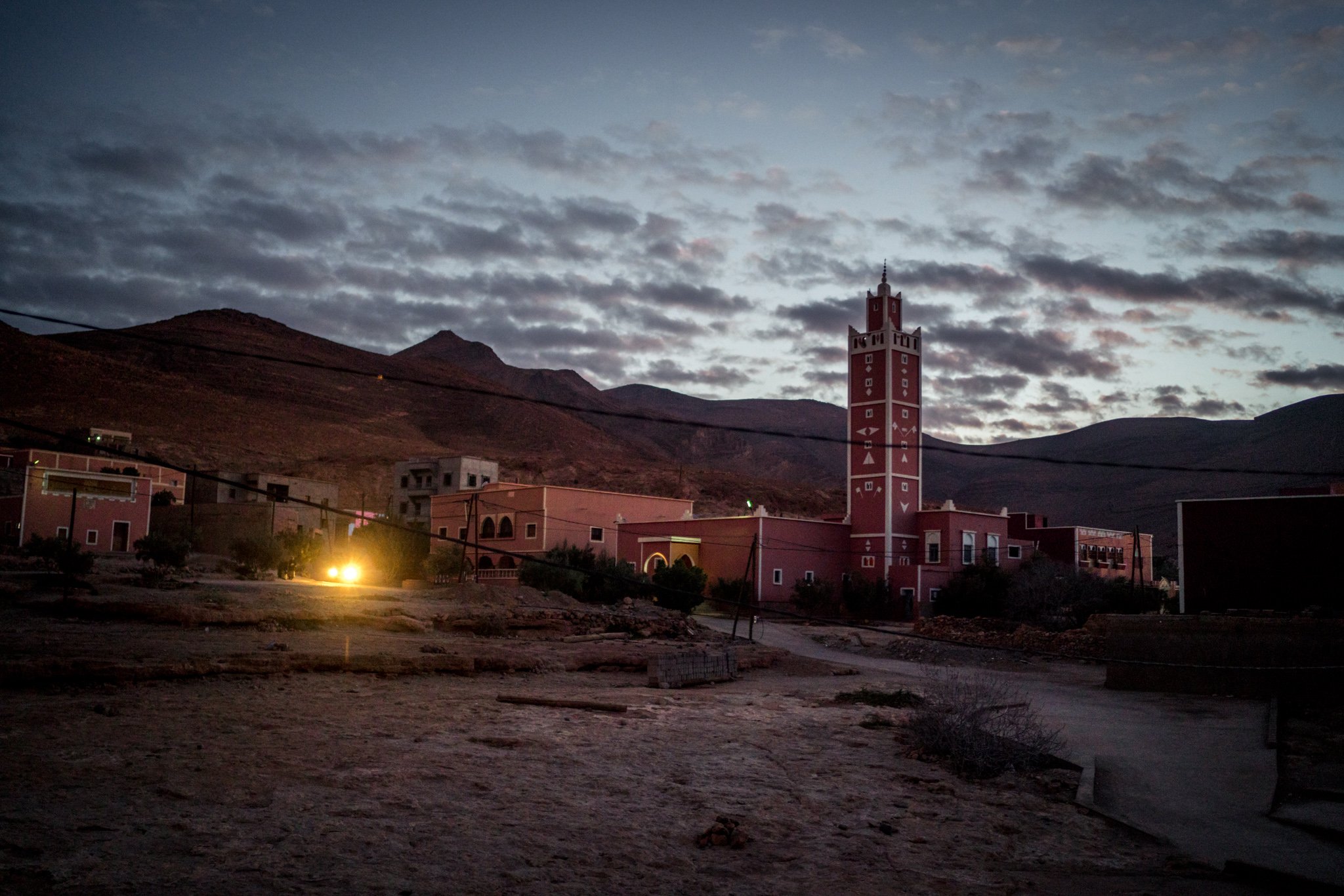
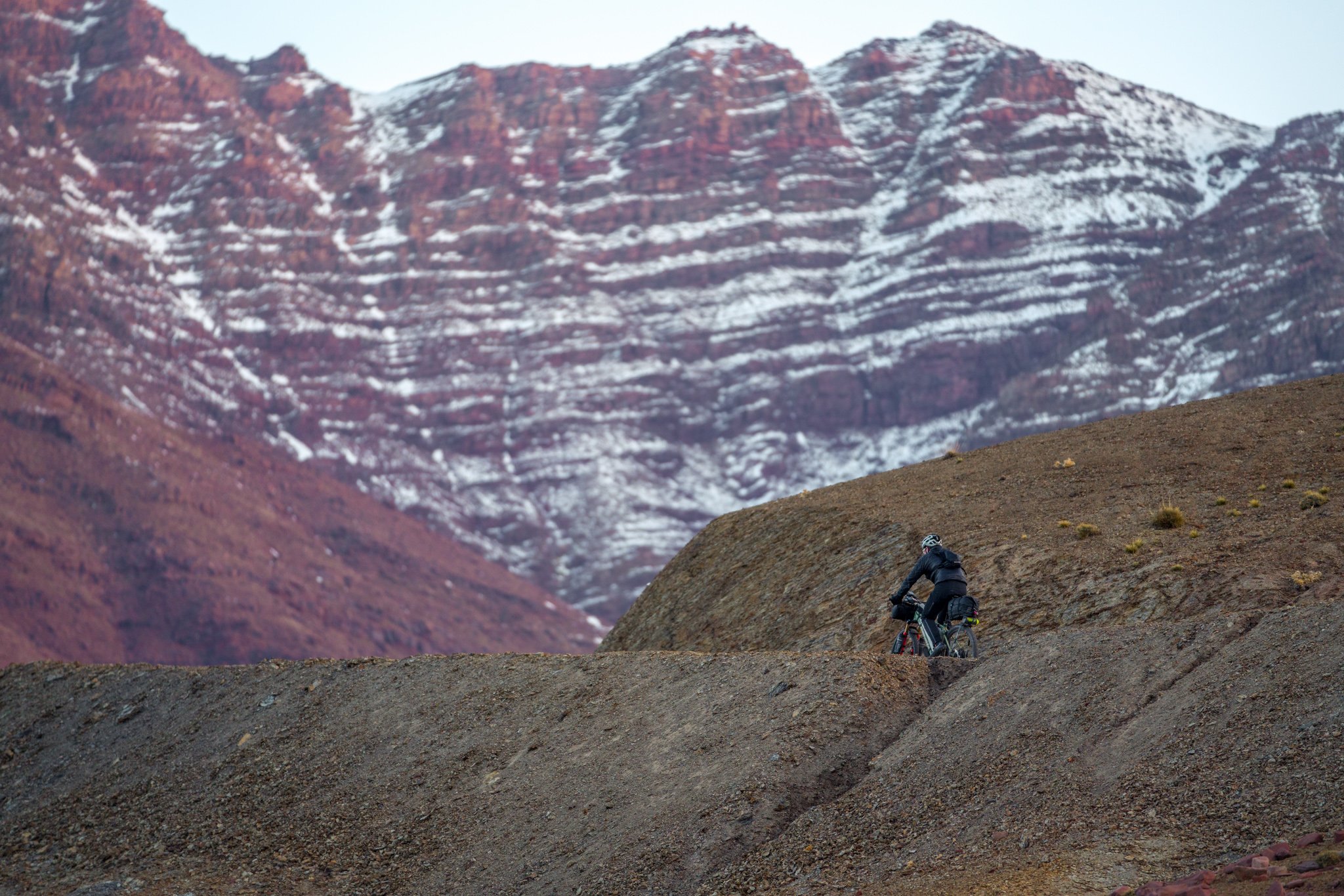
WHY MOROCCO?
Morocco is a country where African, Arab and European cultures are entwined. Located at the mouth of the Mediterranean Sea, Morocco is the closest point of contact to Europe for Africa as a continent. It is a land of tolerance, a blend of cultures and religions, a country renowned for its hospitality. The fascinating mixture of history, art, food, music and architecture makes Morocco an unforgettable destination.
The enchanting labyrinths of bazaars and souks in the old Medinas, the incredible historical monuments, the friendly people, the vast and stunning snow-capped Atlas Mountains, the never ending warm and windy Atlantic ocean coastline, and the impressive Sahara Desert, famous as a location for many Hollywood movies, are just some of the country’s natural and cultural beauties that never fail to leave a lasting impression.
APPLYING TO RACE
Categories: Racers can ride solo or as a pair
Cost: £360 per rider + £40 tracker rental if required (one tracker per participant for pairs) + £50 sponsorship fee (previously known as media license)
-
Race Logistics: registration, 3 staffed checkpoints, control cars, race media, medical car to liaise with local emergency services, 24/7 race HQ, team of dotwatchers.
Race manual
Race GPX track, fully checked and validated by Mountain Race teams on the ground
GPS tracker rental if required & online tracking platform provided by Maprogress
Race T-Shirt
Some goodies provided by our sponsors
Numbered Race Cap
Bike box transfer to the finish line
After party
Access to all race photography for personal use at the end of the race
The Atlas Mountain Race is a serious undertaking that should not be underestimated. It takes place in an environment that can be as tough as it is beautiful. It requires not only the ability to ride big days back to back, but also knowledge and experience of self-reliance in an arid mountain environment. Although it is definitely a race, your primary concern should always be your own safety. Riders will experience the natural beauty of Morocco, and the warmth and generosity of its people. It is an experience that will likely stay with you a lifetime.
Ideally riders should have experience with multi-day bikepacking trips — preferably off-road in remote areas. Riders need to understand how to look after themselves in a harsh environment, when they’re exhausted and near their limits.
We don’t want the races to seem like something that is completely off-limits to anyone except the most hardcore bikepacking racers. All those who wish to race will be required to complete an application that assesses your ability to make safe decisions in the mountains.
FAQs
-
Why race anything? I think that the best answer we can really offer is to simply direct you to the article below, by Mike Hall who explained it far better than we ever could.
THIS IS NOT A TOUR
Rider-led racing grew out of the World Cycle Race and its ethos is to bring racing back to where it was over a century ago: when riders challenged each other over impossibly long distances and without the support and conveniences associated with today’s racing. Gone are the team cars, the Death Stars and the gourmet energy bars, and in their place is the simple joy of the pursuit. One man only has led the way to this new reality – Mike Hall.
Five years ago I entered my first bikepacking race, a race quite unlike anything else I had encountered. It wasn’t just any race either; the Tour Divide is possibly the ‘queen stage’ of Bikepacking races. It is also claimant to the title of world’s longest mountain bike race.
The route itself follows the continental divide and was originally prospected for the touring cyclist. For many who take to the start line on the ‘Grand Depart’ it is still first and foremost an adventure, but out front it is absolutely and unquestionably a race. The record stands a few minutes shy of 14 and a half days, and last year’s first three finishers were separated by just 40 minutes. Somewhere through the pack the mentality changes though. Whether one is racing or touring is largely a mind state and the line is often blurred.
Touring many people can understand, but the motivation to race such a distance can provoke questions, particularly when there is no apparent reward. Questions of why, for any endeavour, I struggle with. This may be, in part, because I feel so ill-equipped to articulate it concisely to those who have no notion. It may also have something to do with the exasperation I feel that the question should need asking at all. To me the reason is self evident and the obvious but unhelpful retort is “why wouldn’t you?”. For some, whether it’s 250m of wooden boards or more than 2,700 miles of Continental Divide, racing is reason enough.
The response “for sport” alone seems a flimsy one, yet to me it should be enough. Is questioning the pursuit of any sporting challenge not akin to questioning the notion of sport itself? Should the racer bear the burden of this justification? Central to sport after all is that it’s a game, and fundamentally pointless. Therein lies its beauty.
Could this disconnect be a symptom of a widespread culture of convenience which seeks to remove physical effort from our lives without forethought and replace it with a packaged commodity sold back to us? One where sport must either have a point, be a profession or a business interest to be credible. Otherwise it should be a leisure activity and its assets resigned to toys. Its easy to see in such world that voluntary physical activity taken to such an extreme and without compensation would be viewed as alien or perverse and requiring explanation.
The question of why racing versus touring was given a more poignant form for me on the day I finished the World Cycle Race. A journalist with a particular interest in cycling wrote a piece in the Guardian bike blog entitled exactly that; ‘Cycling around the world, Great, but why race?’ I can appreciate some of the author’s points, but one of the main assumptions is there is only a choice between leisurely pasttime or an industry, and there is no room or reason in between for a sporting bet struck between amateurs for the sheer sake of curiosity and an interesting life.
By now this question has come to me in numerous forms, more often than not as “wouldn’t you enjoy it more if you slowed down a bit?” Over the years I have ruminated on a more detailed response, perhaps introspectively on the odd long ride, but largely the answer comes down to the same; “not really, no”.
I wonder if anyone asked Stirling Moss after he won the Mille Miglia in 1955 whether he wouldn’t have enjoyed it a bit more had he slowed down to appreciate the Tuscan hills, or stop by at the Campo in Siena to watch the world go by with a few slices of Pecorino and a glass of Chianti? Likewise did anyone suggest to Juan Manuel Fangio on his way to victory at the 1950 Monaco Grand prix that maybe he could park up at Cassino and play a few games of roulette and chat to the locals? Probably not.
I would not like to draw personal comparisons with such illustrious figures of history. I mean more to illustrate how we are influenced to perceive sport and how what counts as legitimate sport is closely coupled to our cliched perception of what success is, one that is only read at the bottom line.
I also wish to counter the premise that one cannot enjoy intensely one’s surroundings adequately whilst expending ones self. Indeed I’ll go further and assert that the effort of climbing a mountain or crossing a continent serves only to enhance its delights and majesty in a manner no leisurely wanderings can approach.
Racing the divide has been a transformative experience for me in so many ways and in some way has touched almost everything I have done since. The trail might take the body to the physical place, covering vast distances through wild open and desolate landscapes alive with wildlife and changing before your eyes. The race however, the thrill of the chase, the potent cocktail of adrenaline, endorphins, fatigue, sleep deprivation, stress and finally relief takes the mind to quite another. The personal satisfaction, confidence and empowerment from the achievement lasts a lifetime. For me this combination is untouchable.
This is why, for now at least, you can keep your nice, your leisurely and your convenience and if it comes to it, you can also keep your professional sports. This is not a tour and no, I do not want to slow down because I really don’t think I could possibly enjoy any more than I do.
We wish to thank ‘The Bugle’ by Brooks England for allowing us to reproduce Mike’s article.
-
For us, unsupported means that you completed the races entirely under your own steam, using only your own equipment and without any outside assistance. When things got tough you got through them yourself, when things broke, you figured out how to fix them and when you got lost you managed to get yourself un-lost. You will be able to learn more about the unsupported ethos and rules above and in the Race Manual.
-
We don’t allow any kind of outside media crew following a single rider. We don’t consider that it’s compatible with the unsupported ethic. It will also impact negatively on other riders’ experience and that is not something we’re willing to sacrifice. As much as is possible, we want a fair, level playing field.
-
The Mountain Races were primarily designed as a solo challenge. However, we understand that these events are a pretty serious undertaking and in the interest of making it a little more accessible to less experienced riders, you can also ride as a pair. The same rules apply as to solo riders but to the pair as a whole. That means no outside assistance to the pair as a whole. Sharing equipment, drafting, support, etc. is perfectly fine between the two members of the pair.
-
If you are racing a Mountain Race event for the first time and unsure which best suits your abilities or experience, we recommend starting with Atlas Mountain Race. While the rocky nature of the terrain can make the riding quite tough, you don’t have the altitude or weather to deal of SRMR, and the relentless climbing of HMR.
-
Race Logistics: registration, 3 staffed checkpoints, control cars, race media, medical car to liaise with local emergency services, 24/7 race HQ, team of dotwatchers.
Race manual
Race GPX track, fully checked and validated by Mountain Race teams on the ground
GPS tracker rental if required & online tracking platform provided by Maprogress
Race T-Shirt
Some goodies provided by our sponsors
Numbered Race Cap
Bike box transfer to the finish line
After party
Access to all race photography for personal use at the end of the race
-
There are a number of bike options that would all be solid choices for these races. There are few extremely technical sections, but you will benefit from wider tyres, flat bars and mountain bike geometry on the rougher sections and on descents. When it gets very tough, you probably won’t be able to ride, regardless of the bike you choose.
We think the ideal bike is something fast and light with at least 2.0” tyres. When it comes down to it, it will depend on you: your bike handling skills, how much comfort you need for long days in the saddle, and the bike that you have available. What I would recommend though is low gearing, with, at the very least, a 1 to 1 ratio for your lowest gear. There are some steep, steep sections. You may well also want to go with front suspension, but it is not required. We would personally recommend a hardtail 29er.
At the end of each race many gravel bike riders wished they had brought a mountain bike, but not a single rider on a mountain bike wished that they had brought a gravel bike. You have been warned!
-
The required equipment varies for each of the races.
All races:
Front and Rear lights
Helmet
Basic first aid kit: this includes bandages, antiseptic/sterile wipes, medication
Suitable sleeping system: see below for race specific requirements
Waterproof jacket
Down jacket or synthetic equivalent: Something warm if you get stuck in cold/wet weather
Survival blanket: They’re super light and could prove invaluable in an emergency
Spare derailleur hanger
In addition to the kit list above, the following is required for each individual race.
Silk Road:
Sleep system requirements: equipment to be comfortable sleeping at -15°c degrees.
Individual Shelter: We strongly recommend that you bring a tent but a good bivy is also acceptable if you are confident and experienced in its use.
Water purification Tablets/water filter/Steripen/equivalent: Very important. Please use them at all times even if the river looks clean and you can’t see any animals around!
Gloves: To our surprise we had a rider who didn’t bring gloves in the first edition. You will need to have two pairs of gloves. One warm and one waterproof. These are to protect you from the weather rather than cycling specific.
Atlas
Sleep system requirements: equipment to be comfortable sleeping at 0ºc degrees.
Gloves: These are to protect you from the weather rather than cycling specific. They should be warm and at least water resistant.
Hellenic
Sleep system requirements: equipment to be comfortable sleeping at 5ºc degrees.
Gloves: these are to protect you from the weather rather than cycling specific. They should be warm and at least water resistant.
-
The races are unsupported. That means that you need to sort yourself out before, after and during the race. Volunteers may provide some limited assistance at checkpoints but that is entirely at their discretion and would be confined by the guidelines we have given them. Assume that no help will be given. We cannot guarantee that there will be accommodation at the checkpoints but we will do our utmost to have hot meals available 24/7 unless otherwise specified.
-
This varies from one edition to the next but there are a handful of sections where there is over 100 kilometres with essentially no resupply whatsoever. Think carefully about your estimated pace and the quantity of food you will need to bring with you and then bring extra. More detailed information on resupply points is included in the Race Manual.
-
The Rider Agreement is the document that participants are required to sign to participate in the races. It outlines the rights and responsibilities of the rider and race organisation. It makes clear the risks involved in taking part and asks riders to waive the responsibility of those risks for the race organisation. It will be made available to riders upon being given a spot to take part.
-
If you are sponsored and plan to tag or mention your sponsors on social media, thank them, or in any other way promote them then we ask you to pay a small fee. The main aim of introducing this is to make the entry fee fairer and more representative of what riders are getting from their participation. It will mean that sponsors who derive a benefit from a rider taking part in the race are charged for this, and allow us to keep entry fees as low as possible for true privateer racers. Please do not hesitate to get in touch if you have any questions about this.
Essentially, if you have sponsors and intend to tag them, thank them for their support or in any way promote them through your participation in the race, then you should pay the £50 sponsorship fee.
-
There are two requirements to take part in the race besides signing the Rider Agreement.
All riders must have medical insurance. This should cover extraction and repatriation as well as any other potential medical costs in case of emergency.
All riders are required to provide a medical note from their doctor, confirming that they have no medical conditions preventing them from taking part in the race. It should mention the race by name. There is a list of topics in the respective Race Manual that you may want to discuss with your doctor to be well prepared prior to arriving.
-
After receiving confirmation of their successful application to enter the race, riders will be asked to pay a 50% deposit to confirm their spot in the race. This deposit is non-refundable. There will then be a 50% balance payment closer to the start of the race that is refundable up to 3 months before the start of the race.
Further to this, riders may ask for a 50% refund if they cannot participate for medical reasons up to one month before the start of the race. They will need to provide a signed & stamped medical note as justification.
-
This used to be an unlikely possibility, but in recent years, due the COVID19 pandemic, we’ve seen that anything is possible. If the race cannot go ahead for reasons beyond the control of the organisers, riders will have two options : either transfer their entry to the next edition or cancel their participation and receive a 50% refund. If the race has to be postponed more than once, we may require riders to pay a small entry deferral fee of £30 to keep their spot and help ensure the survival of the race.
-
Due to the serious nature of the event and the entry process that requires the race organisers to screen each applicant’s experience prior to acceptance, it is not possible for riders to transfer their entry to another person.
-
Yes, there is a discount for Moroccan and Kyrgyz riders at AMR and SRMR respectively. Please get in touch for us to modify the automatically generated invoice during the registration process.











